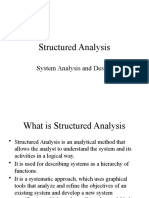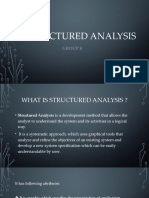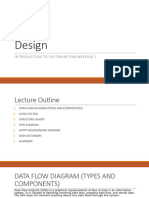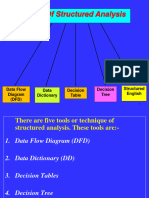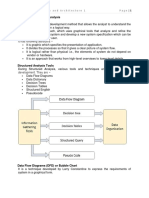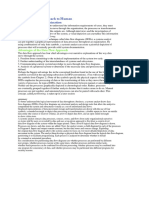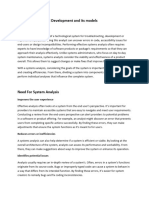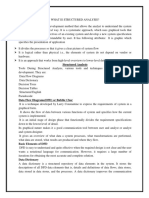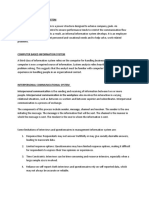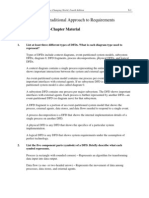0% found this document useful (0 votes)
36 views26 pagesTools of Structured Analysis
The document discusses various tools used in structured analysis, including data flow diagrams, data dictionaries, flow charts, and Gantt charts. It focuses on data flow diagrams, explaining that they show the flow of data between system functions and how the current system is implemented through graphical representation. The basic elements of a data flow diagram are described as entities, processes, data stores, and data flows.
Uploaded by
raoadityayadav9138Copyright
© © All Rights Reserved
We take content rights seriously. If you suspect this is your content, claim it here.
Available Formats
Download as PDF, TXT or read online on Scribd
0% found this document useful (0 votes)
36 views26 pagesTools of Structured Analysis
The document discusses various tools used in structured analysis, including data flow diagrams, data dictionaries, flow charts, and Gantt charts. It focuses on data flow diagrams, explaining that they show the flow of data between system functions and how the current system is implemented through graphical representation. The basic elements of a data flow diagram are described as entities, processes, data stores, and data flows.
Uploaded by
raoadityayadav9138Copyright
© © All Rights Reserved
We take content rights seriously. If you suspect this is your content, claim it here.
Available Formats
Download as PDF, TXT or read online on Scribd
/ 26


